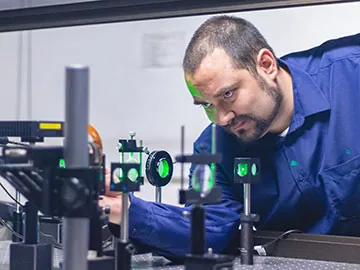
Revolutionary Speed 3D Bioprinter Set to Transform Drug Discovery Landscape!
2024-11-04
Author: Li
In an exciting breakthrough for biomedical engineering, researchers from the University of Melbourne, Australia, have unveiled a groundbreaking 3D bioprinting system that could revolutionize drug discovery as we know it. This innovative bioprinter is capable of creating structures that closely imitate the wide array of tissues found in the human body, from the soft and delicate brain tissue to tougher substances like cartilage and bone.
What makes this development particularly pivotal is its potential impact on cancer research. The advanced 3D printing technology empowers scientists with a powerful tool for replicating specific organs and tissues, thus greatly enhancing the ability to predict and cultivate new pharmaceutical therapies. This advancement promises a future of drug development that is not only more sophisticated but also more ethical, as it significantly reduces the reliance on animal testing.
Traditionally, most 3D bioprinters utilize a slow, layer-by-layer fabrication process that poses various challenges, including lengthy printing times that can jeopardize the viability of living cells. After printing, these delicate cell structures require careful transfer to standard laboratory plates for further analysis—a step fraught with risks that could compromise the integrity of the fragile tissues.
However, the innovative team at the University of Melbourne has turned this conventional process on its head by developing a sophisticated optical-based system that eliminates the traditional, time-consuming layers. Instead, this breakthrough technology employs vibrating bubbles to produce cellular structures in mere seconds—an astounding speed that's approximately 350 times faster than conventional methods. This level of rapid fabrication allows researchers to accurately reproduce human tissues at a cellular resolution, ushering in a new era for biomedical research.
Moreover, the dramatic reduction in printing time, combined with the capability to print directly into standard lab plates, has resulted in a significant increase in cell survival rates. This advancement also eliminates the need for additional handling, ensuring that the printed structures remain sterile and intact throughout the entire process.
With such powerful implications for the future of drug discovery, the speed 3D bioprinter stands as a remarkable game changer, potentially leading to faster, more efficient, and ethical pharmaceutical development. Keep an eye on this revolutionary technology—it might just be the key to breakthroughs that could change medicine forever!


 Brasil (PT)
Brasil (PT)
 Canada (EN)
Canada (EN)
 Chile (ES)
Chile (ES)
 España (ES)
España (ES)
 France (FR)
France (FR)
 Hong Kong (EN)
Hong Kong (EN)
 Italia (IT)
Italia (IT)
 日本 (JA)
日本 (JA)
 Magyarország (HU)
Magyarország (HU)
 Norge (NO)
Norge (NO)
 Polska (PL)
Polska (PL)
 Schweiz (DE)
Schweiz (DE)
 Singapore (EN)
Singapore (EN)
 Sverige (SV)
Sverige (SV)
 Suomi (FI)
Suomi (FI)
 Türkiye (TR)
Türkiye (TR)